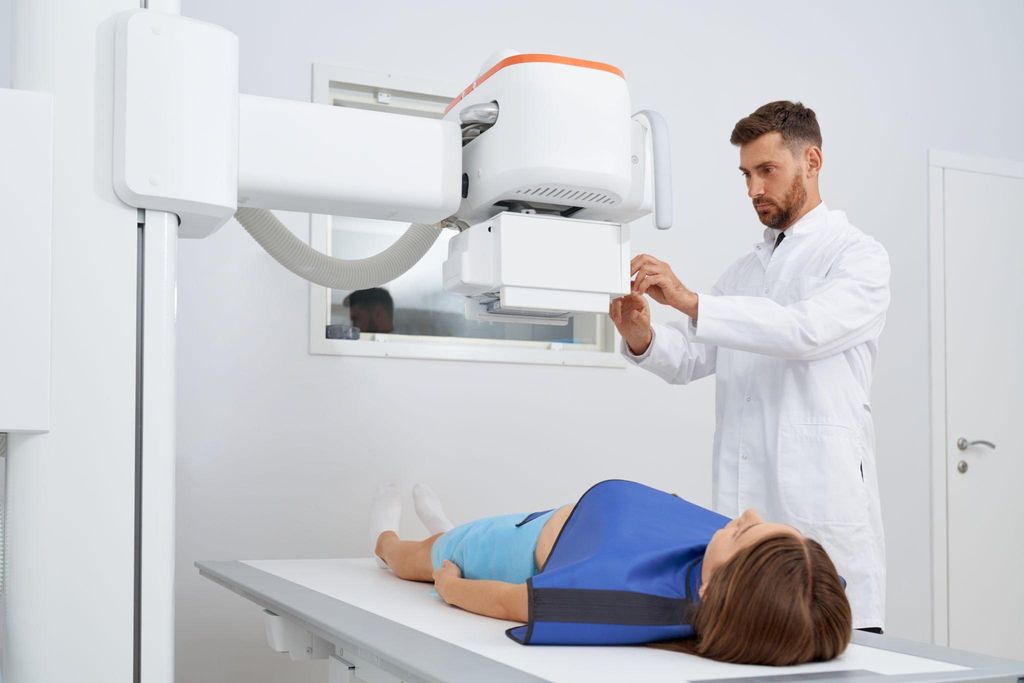Anesthesia & ultrasound have become inseparable in today’s medical landscape, transforming the way regional anesthesia is administered. Imagine a time when anesthesiologists had to rely solely on anatomical landmarks and blind techniques to administer nerve blocks. The margin for error was significant, and the stakes were high. Fast forward to today, and we have ultrasound—a game-changer that has revolutionized anesthesia, making it more precise, safer, and more effective.
How Ultrasound Transforms Regional Anesthesia
The use of ultrasound in anesthesia isn’t just about technology—it’s about enhancing patient care. Picture this: an anesthesiologist preparing to perform a nerve block on a patient. Without ultrasound, they would have to rely on their knowledge of anatomy and their experience to locate the nerve. But with ultrasound, they can see the nerve, surrounding tissues, and blood vessels in real-time, guiding the needle with pinpoint accuracy. This is the power of ultrasound in anesthesia—a leap from guesswork to precision.
Real-Life Applications of Ultrasound in Anesthesia
One of the most common uses of ultrasound in anesthesia is for nerve blocks. Think of a patient about to undergo surgery on their arm. Instead of using general anesthesia, the anesthesiologist can use a brachial plexus block to numb the entire arm. With ultrasound, the anesthesiologist can visualize the brachial plexus and inject the local anesthetic precisely where it’s needed. The result? The patient remains awake, avoids the risks associated with general anesthesia, and experiences excellent pain relief.
Another application is in central neuraxial blocks, such as epidurals and spinals. Imagine a woman in labor, anxious about the pain. An ultrasound-guided epidural can make the process smoother, allowing the anesthesiologist to locate the epidural space accurately and administer the anesthetic with minimal discomfort.
The Advantages of Ultrasound Guidance
Using ultrasound for anesthesia isn’t just about fancy equipment—it’s about tangible benefits that enhance patient safety and comfort. When it comes to anesthesia & ultrasound, the advantages are clear.
Increased Accuracy
With ultrasound, anesthesiologists can visualize the exact location of the needle in relation to the nerve and surrounding structures. This level of accuracy reduces the risk of complications, such as nerve injury or accidental injection into a blood vessel. In simple terms, it takes the guesswork out of anesthesia.
Improved Patient Safety
The use of ultrasound in anesthesia significantly improves patient safety. For instance, in patients with difficult anatomy or those with contraindications to traditional methods, ultrasound provides a clear view of the target area, reducing the risk of complications. Consider a patient with scoliosis—finding the correct spot for an epidural can be challenging. Ultrasound helps anesthesiologists navigate these complexities, ensuring the anesthetic is delivered safely.
Enhanced Patient Comfort
No one enjoys the idea of needles, especially when it comes to anesthesia. But with ultrasound, patients can experience less pain during the procedure. Imagine a patient needing a femoral nerve block for knee surgery. Without ultrasound, the anesthesiologist might need to make multiple attempts to locate the nerve. With ultrasound, the needle is guided directly to the nerve, reducing discomfort and making the process quicker and smoother.
The Tools of the Trade
When we talk about anesthesia & ultrasound, it’s essential to understand the tools that make this combination so powerful. Ultrasound machines used in anesthesia come with different types of transducers, each designed for specific applications.
Linear Transducers
For superficial nerve blocks, such as those in the upper limb, linear transducers are the go-to choice. They provide high-resolution images of structures close to the skin, making it easier to visualize nerves and guide the needle. Picture a scenario where a patient needs a wrist block for hand surgery. The linear transducer offers a detailed image, allowing the anesthesiologist to perform the block with confidence.
Curvilinear Transducers
Deeper blocks, such as those required for central neuraxial anesthesia, call for curvilinear transducers. These transducers penetrate deeper into the body, providing clear images of structures like the epidural space. Imagine an anesthesiologist preparing to administer a spinal anesthetic for a cesarean section. The curvilinear transducer allows them to see the spinal structures in detail, ensuring the anesthetic is delivered precisely where it’s needed.
The Importance of Training and Expertise
While the technology is impressive, it’s the anesthesiologist’s skill that truly makes anesthesia & ultrasound a powerful combination. Proper training in ultrasound-guided techniques is crucial for achieving the best outcomes.
The Learning Curve
Mastering ultrasound-guided anesthesia requires dedication and practice. Anesthesiologists must learn to interpret ultrasound images and perform procedures simultaneously—a skill that comes with experience. Think of it as learning to play a musical instrument. At first, it might feel awkward, but with practice, it becomes second nature.
Continuous Learning
The field of anesthesia is constantly evolving, and so is the technology that supports it. Anesthesiologists must stay updated on the latest ultrasound techniques and equipment to maintain their proficiency. Consider a seasoned anesthesiologist who has been practicing for decades. Even with years of experience, they regularly attend workshops and training sessions to stay at the forefront of their field.
Challenges and Limitations
While ultrasound has undoubtedly transformed anesthesia, it’s not without its challenges. Understanding these limitations is key to maximizing the benefits of ultrasound guidance.
The Learning Curve
As with any advanced technology, there is a learning curve associated with ultrasound-guided anesthesia. Anesthesiologists must become adept at interpreting ultrasound images and coordinating them with their manual skills. Imagine a newly trained anesthesiologist performing their first ultrasound-guided block. The pressure is on, and it takes time to develop the confidence needed to perform the procedure smoothly.
Equipment Costs
High-quality ultrasound machines are an investment, and not all healthcare facilities may have access to the latest technology. This can be a limiting factor, particularly in resource-constrained settings. Picture a rural clinic where budget constraints make it difficult to afford state-of-the-art equipment. In such cases, anesthesiologists must rely on their skills and experience to make the most of the tools available.
Patient Factors
Ultrasound isn’t a one-size-fits-all solution. Factors such as obesity, edema, or anatomical variations can reduce the clarity of ultrasound images, making some blocks more challenging to perform. Imagine a patient with significant edema—visualizing the underlying structures becomes difficult, requiring the anesthesiologist to adapt their technique.
Looking Ahead: The Future of Anesthesia & Ultrasound
The relationship between anesthesia & ultrasound is still evolving, with exciting advancements on the horizon. As technology continues to improve, the possibilities for ultrasound-guided anesthesia are expanding.
Advancements in Technology
The development of portable ultrasound machines is one such advancement that holds promise for the future. Imagine a handheld ultrasound device that anesthesiologists can carry with them, allowing for quick and accurate assessments even in emergency situations. Additionally, the integration of artificial intelligence (AI) into ultrasound technology is another exciting development. AI can assist in image interpretation, making the process faster and more accurate, especially for less experienced practitioners.
Expanded Use of Ultrasound
As the technology becomes more accessible, we can expect to see ultrasound-guided anesthesia used in a wider range of settings. Picture an outpatient clinic where minor surgical procedures are performed. With portable ultrasound machines, anesthesiologists can offer precise and effective anesthesia without the need for complex setups.
Conclusion
In the world of anesthesia & ultrasound, the future is bright. The combination of these two technologies has already transformed patient care, and the potential for further advancements is limitless. From improving accuracy and safety to enhancing patient comfort, ultrasound-guided anesthesia represents a significant leap forward in medical practice. As technology continues to evolve, and as anesthesiologists continue to refine their skills, the role of ultrasound in anesthesia will only grow, bringing with it new opportunities to improve patient outcomes and revolutionize the field










